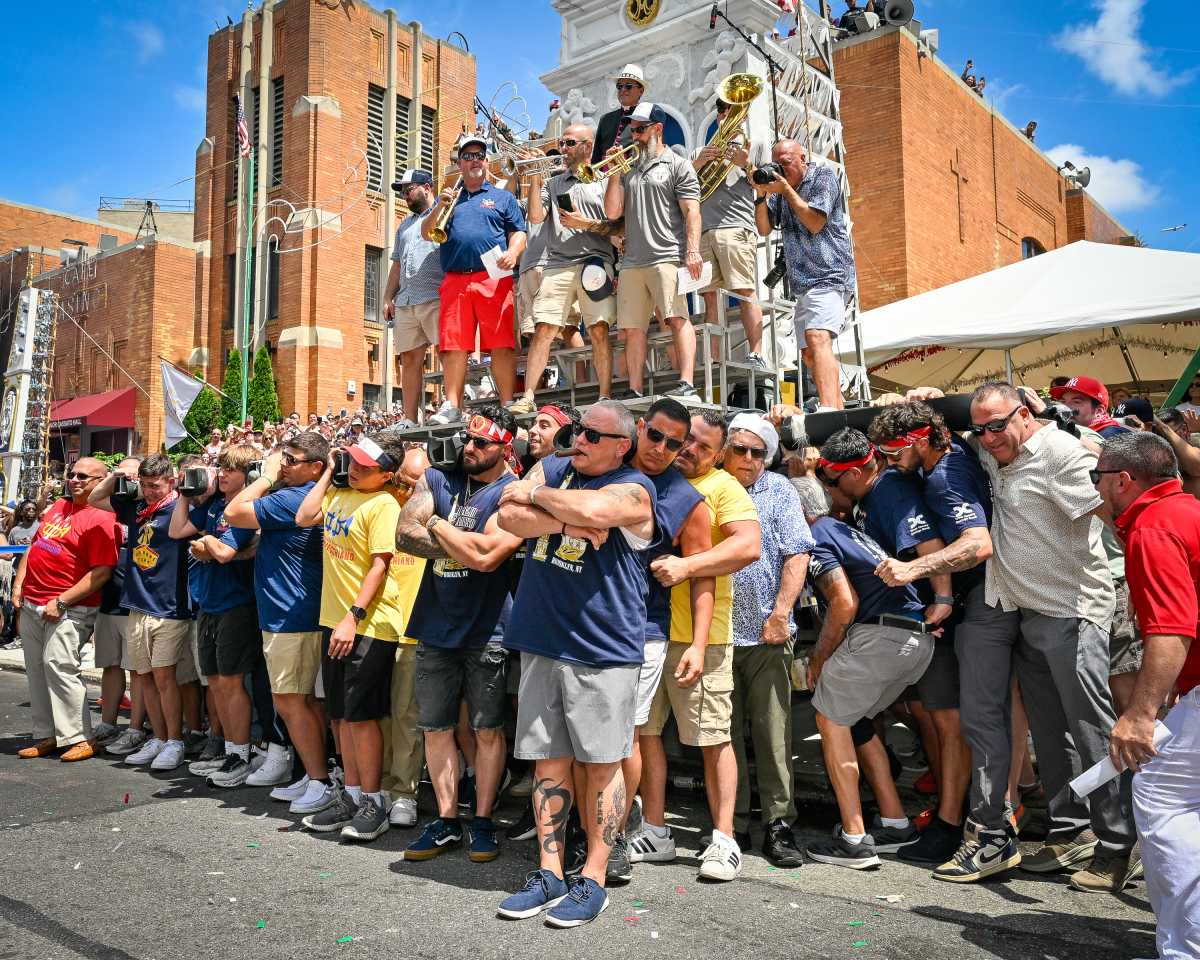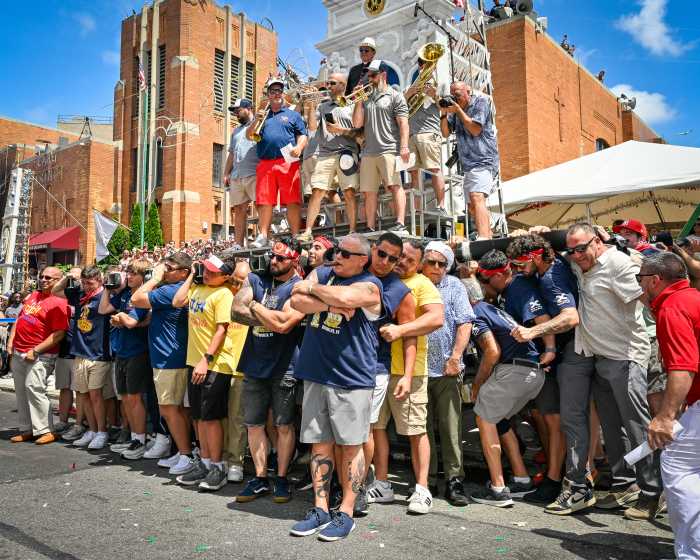
BY JOHN BAYLES | If there’s one booth at the Feast of San Gennaro that needs no name, no sign on the front, no marketing material whatsoever, it’s the booth on the southeast corner of Spring and Mulberry Streets. What it sells and what graces its display counter is enough to make any passerby stop on a dime: fresh baked cannoli.
The booth has been at the same location for 32 years. It’s one of the oldest booths that still takes part in the feast and was started by the Rimesso family. It continues to remain “in the family” to this day, run by Nancy Rimesso and Rob Diaz. While much has changed since the feast started 85 years ago, there is at least one constant.
“This is the original cannoli,” said Diaz on Monday evening. “It’s still the feast’s best seller. They’ll invent a new one, but they can’t reinvent the original.”
Across the street from the Rimesso’s booth is Chachi’s Hot Sausages. Like the Rimesso operation, the Chachi booth has remained, since 1975, at the same location and is still “all in the family.” Before it became known as Chachi’s, it was simply known as the best sausage the feast had to offer.
Joe Lacorazza is currently running the booth. But, like his neighbor across the street, he never really had a choice; it was a family duty. The name came as a result of Joe’s older brother’s striking resemblance to Scott Baio, who played Chachi in the old sitcom “Happy Days.”
Joe’s father lived above Rocky’s on the corner of Spring and Mulberry and his mother lived one block north at 278 Mulberry. The way Joe’s mother, Louise, tells it, the Monsignor from the old St. Patrick’s Cathedral on Mulberry Street came to her father and uncle one day, back when the church still allowed gambling and when beer and wine were sold at almost every booth. At that time, the block in front of old St. Patrick’s had no streetlights, and they needed some local parishioners to set up booths and drive traffic toward the cathedral. Louise’s father and uncle did not own a restaurant, but the Monsignor knew they had a knack for cooking sausage and peppers.
Chachi’s has no storefront. They participate in the feast every year because it’s a family tradition. As Louise told the story of how things used to be, with bandstands blasting Italian music on every corner and gambling at the local cathedrals, she pointed to a group of older men on the corner behind the Chachi’s booth.
“I went to kindergarten with those guys,” said Louise. “This is our family reunion.”
Louise’s son Joe echoed the sentiment.
“I’ve always looked at it as a reason to get together, beyond just funerals and weddings,” said Joe.
For Joe the family aspect behind the Feast of San Gennaro has taken on even more significance. It was in 2005 when he met his wife right in front of his family’s booth. She hailed from Las Vegas and was visiting a friend in the city.
“She told her friend she was upset because she was missing the San Gennaro Feast in Vegas,” recalled Joe.” Her friend told her she was crazy… that New York had the best San Gennaro fest in the country.”
Joe politely asked his future wife to take a walk when he finished up at the booth, and the rest is, well, history. The two were married just over a year ago in Las Vegas. On the cover of their thank you cards was an image depicting the streets signs from the corner where the two met, Spring and Mulberry.
Both booths are still participating in the Feast of San Gennaro for the same reason: it’s a family tradition.
The most common comment concerning his booth today, said Diaz, is, “It’s a slice of Heaven in a shell.”
Like any small business, a testament to its success are the number of repeat customers. For the Rimesso booth, the same principle applies.
“We have repeat customers every year,” said Diaz. “People have been coming to this booth for 30 years, from Seattle, from Boston, from all over.”
What is different, said Diaz, are the hours.
“Back then, the booths were making money until 4 a.m.” Diaz recalled.
Earlier this year there was a short-lived movement that jeopardized the future of one of the country’s oldest street festivals. Local businesses complained that the long hours and the length of the fest in general, a full 11 days, resulted in a loss of profits. The result was shortening the feast on weekdays by an hour and on weekends by 30 minutes.
That outcome however did not seem to interfere with the feast’s popularity on its opening weekend.






































